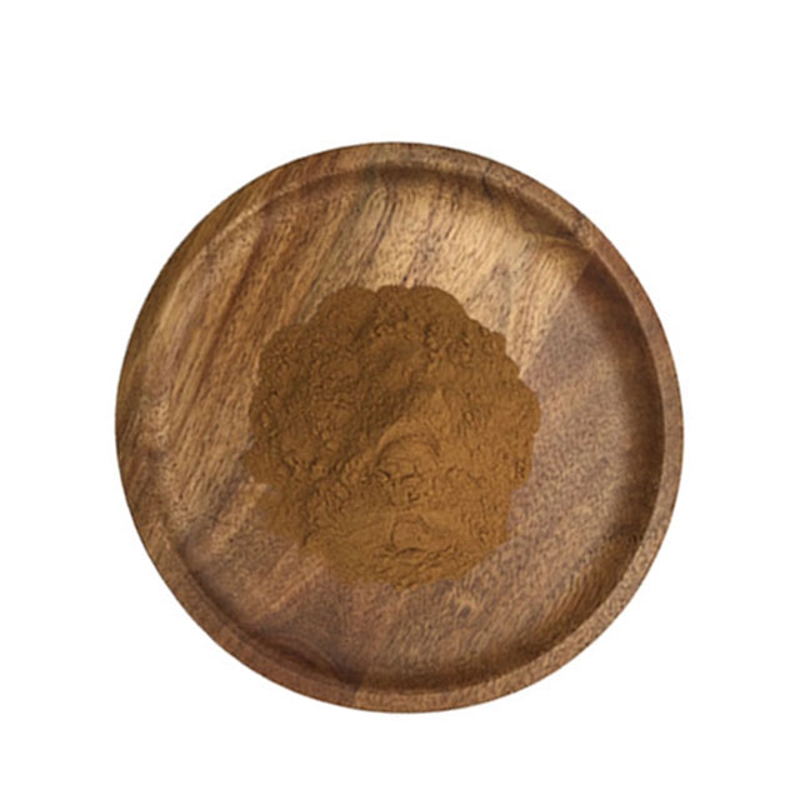-
Categories
-
Pharmaceutical Intermediates
-
Active Pharmaceutical Ingredients
-
Food Additives
- Industrial Coatings
- Agrochemicals
- Dyes and Pigments
- Surfactant
- Flavors and Fragrances
- Chemical Reagents
- Catalyst and Auxiliary
- Natural Products
- Inorganic Chemistry
-
Organic Chemistry
-
Biochemical Engineering
- Analytical Chemistry
- Cosmetic Ingredient
-
Pharmaceutical Intermediates
Promotion
ECHEMI Mall
Wholesale
Weekly Price
Exhibition
News
-
Trade Service
Editor’s note iNature is China’s largest academic official account.
It is jointly created by the doctoral team of Tsinghua University, Harvard University, Chinese Academy of Sciences and other units.
The iNature Talent Official Account is now launched, focusing on talent recruitment, academic progress, scientific research information, interested parties can Long press or scan the QR code below to follow us
.
iNature protein acetylation has played a key role in alcoholic liver disease (ALD)
.
Sirutin 2 (SIRT2) is a nicotinamide adenine dinucleotide (NAD+) dependent deacetylase involved in regulating aging, metabolism and stress
.
However, the role of SIRT2 in ALD is still unclear
.
On October 12, 2021, He Ming and Zhao Qian from Shanghai Jiaotong University jointly published a research paper entitled "SIRT2-mediated deacetylation and deubiquitination of C/EBPβ prevents ethanol-induced liver injury" in Cell Discovery (IF=10.
85).
The study reported that SIRT2-mediated CCAAT/enhancer binding protein β (C/EBPβ) deacetylation-deubiquitination switch can prevent ALD
.
The results of the study showed that liver SIRT2 protein expression was negatively correlated with the severity of alcoholic liver injury in ALD patients
.
Liver-specific SIRT2 deficiency makes mice susceptible to ALD, while the overexpression of transgenic SIRT2 in liver cells significantly prevents ethanol-induced liver injury through hepatic steatosis, lipid peroxidation, and normalization of hepatocyte apoptosis
.
In terms of mechanism, this study identified C/EBPβ as a key substrate of SIRT2 related to ALD
.
SIRT2-mediated deacetylation of lysine 102 and 211 reduced C/EBPβ ubiquitination, resulting in enhanced protein stability, and subsequently increased transcription of the C/EBPβ target gene LCN2
.
Importantly, liver deacetylation of C/EBPβ and LCN2 compensation reversed the deterioration of ALD induced by SIRT2 deletion in mice
.
In addition, the expression of C/EBPβ protein is positively correlated with the expression of SIRT2 and LCN2 in the liver of ALD patients, and negatively correlated with the development of ALD
.
Therefore, activation of the SIRT2-C/EBPβ-LCN2 signaling pathway is a potential therapy for ALD
.
Alcoholic liver disease (ALD) is the main category of liver disease, and the mortality rate of ALD continues to increase worldwide
.
ALD includes a variety of histopathological changes, from simple steatosis to alcoholic steatohepatitis, progressive liver fibrosis, cirrhosis and liver cancer
.
Long-term drinking will promote the accumulation of acetaldehyde and other reactive oxygen species in the liver, leading to impaired liver cell metabolism, chronic oxidative stress, lipid peroxidation, liver cell damage and death
.
Although many studies have investigated the pathogenesis and development of ALD, the underlying molecular mechanisms of the harmful effects of alcohol use are still elusive, and current drug treatment options are limited
.
Therefore, identifying new therapeutic targets is an urgent clinical need for ALD
.
Protein acetylation has become a key post-translational modification in alcohol metabolism; however, the regulation and mechanism of protein acetylation in ALD is not yet fully understood
.
Sirtuins (SIRT) are a family of highly evolutionarily conserved nicotinamide adenine dinucleotide (NAD+) dependent protein deacetylases
.
Seven homologues (SIRT1-7) in the mammalian SIRT family show diversity in tissue specificity, subcellular localization, enzyme activity, and target selection
.
SIRT1, SIRT6, and SIRT7 are mainly located in the nucleus, where they deacetylate histones
.
SIRT3, SIRT4 and SIRT5 are mainly located in mitochondria
.
SIRT2 is the only sirtuin protein that is mainly located in the cytoplasm and expressed abundantly in the liver
.
SIRT2 may also shuttle between the cytoplasm and the nucleus during stress
.
There is increasing evidence that SIRT2 plays an important role in regulating aging, glucose and lipid metabolism, cell differentiation, cell cycle and tumorigenesis
.
Previous work has demonstrated that SIRT2 maintains liver insulin sensitivity during physiological aging through deacetylation of NLRP310
.
However, the role of SIRT2 in ethanol-induced liver injury has not been described
.
CCAAT/enhancer binding protein β (C/EBPβ) is an important transcription factor that participates in many biological processes by regulating the expression of target genes, including adipogenesis, gluconeogenesis, liver regeneration, hematopoiesis, and apoptosis
.
In addition, the activity and stability of C/EBPβ may be post-translationally regulated by various modifications including acetylation
.
Although the increase of C/EBPβ protein in ethanol-induced liver steatosis in mice has been observed, the role and mechanism of C/EBPβ dysregulation and acetylation conversion in ALD are still elusive
.
Article pattern (picture from Cell Discovery) In this study, SIRT2 was identified as a new deacetylase of C/EBPβ, and it was revealed that the SIRT2-mediated C/EBPβ deacetylation-deubiquitination switch was induced by ethanol The key protective function in liver injury
.
The in vivo results of this study indicate that the SIRT2-C/EBPβ signaling pathway may become a target for ALD treatment
.
Professor Ming He and Professor Qian Zhao of Shanghai Jiaotong University School of Basic Medicine are the co-corresponding authors.
Master students Zhang Yingting and Ruan Xin in the research group, and Professor Long Xidai from Youjiang Medical College for Nationalities are the co-first authors of this paper
.
The research work was helped and supported by Academician Chen Guoqiang, Professor Liu Junling, Professor Zhong Qing, Researcher Shen Shaoming, and Associate Professor Xia Li of Shanghai Jiaotong University School of Medicine
.
Reference message: https://
It is jointly created by the doctoral team of Tsinghua University, Harvard University, Chinese Academy of Sciences and other units.
The iNature Talent Official Account is now launched, focusing on talent recruitment, academic progress, scientific research information, interested parties can Long press or scan the QR code below to follow us
.
iNature protein acetylation has played a key role in alcoholic liver disease (ALD)
.
Sirutin 2 (SIRT2) is a nicotinamide adenine dinucleotide (NAD+) dependent deacetylase involved in regulating aging, metabolism and stress
.
However, the role of SIRT2 in ALD is still unclear
.
On October 12, 2021, He Ming and Zhao Qian from Shanghai Jiaotong University jointly published a research paper entitled "SIRT2-mediated deacetylation and deubiquitination of C/EBPβ prevents ethanol-induced liver injury" in Cell Discovery (IF=10.
85).
The study reported that SIRT2-mediated CCAAT/enhancer binding protein β (C/EBPβ) deacetylation-deubiquitination switch can prevent ALD
.
The results of the study showed that liver SIRT2 protein expression was negatively correlated with the severity of alcoholic liver injury in ALD patients
.
Liver-specific SIRT2 deficiency makes mice susceptible to ALD, while the overexpression of transgenic SIRT2 in liver cells significantly prevents ethanol-induced liver injury through hepatic steatosis, lipid peroxidation, and normalization of hepatocyte apoptosis
.
In terms of mechanism, this study identified C/EBPβ as a key substrate of SIRT2 related to ALD
.
SIRT2-mediated deacetylation of lysine 102 and 211 reduced C/EBPβ ubiquitination, resulting in enhanced protein stability, and subsequently increased transcription of the C/EBPβ target gene LCN2
.
Importantly, liver deacetylation of C/EBPβ and LCN2 compensation reversed the deterioration of ALD induced by SIRT2 deletion in mice
.
In addition, the expression of C/EBPβ protein is positively correlated with the expression of SIRT2 and LCN2 in the liver of ALD patients, and negatively correlated with the development of ALD
.
Therefore, activation of the SIRT2-C/EBPβ-LCN2 signaling pathway is a potential therapy for ALD
.
Alcoholic liver disease (ALD) is the main category of liver disease, and the mortality rate of ALD continues to increase worldwide
.
ALD includes a variety of histopathological changes, from simple steatosis to alcoholic steatohepatitis, progressive liver fibrosis, cirrhosis and liver cancer
.
Long-term drinking will promote the accumulation of acetaldehyde and other reactive oxygen species in the liver, leading to impaired liver cell metabolism, chronic oxidative stress, lipid peroxidation, liver cell damage and death
.
Although many studies have investigated the pathogenesis and development of ALD, the underlying molecular mechanisms of the harmful effects of alcohol use are still elusive, and current drug treatment options are limited
.
Therefore, identifying new therapeutic targets is an urgent clinical need for ALD
.
Protein acetylation has become a key post-translational modification in alcohol metabolism; however, the regulation and mechanism of protein acetylation in ALD is not yet fully understood
.
Sirtuins (SIRT) are a family of highly evolutionarily conserved nicotinamide adenine dinucleotide (NAD+) dependent protein deacetylases
.
Seven homologues (SIRT1-7) in the mammalian SIRT family show diversity in tissue specificity, subcellular localization, enzyme activity, and target selection
.
SIRT1, SIRT6, and SIRT7 are mainly located in the nucleus, where they deacetylate histones
.
SIRT3, SIRT4 and SIRT5 are mainly located in mitochondria
.
SIRT2 is the only sirtuin protein that is mainly located in the cytoplasm and expressed abundantly in the liver
.
SIRT2 may also shuttle between the cytoplasm and the nucleus during stress
.
There is increasing evidence that SIRT2 plays an important role in regulating aging, glucose and lipid metabolism, cell differentiation, cell cycle and tumorigenesis
.
Previous work has demonstrated that SIRT2 maintains liver insulin sensitivity during physiological aging through deacetylation of NLRP310
.
However, the role of SIRT2 in ethanol-induced liver injury has not been described
.
CCAAT/enhancer binding protein β (C/EBPβ) is an important transcription factor that participates in many biological processes by regulating the expression of target genes, including adipogenesis, gluconeogenesis, liver regeneration, hematopoiesis, and apoptosis
.
In addition, the activity and stability of C/EBPβ may be post-translationally regulated by various modifications including acetylation
.
Although the increase of C/EBPβ protein in ethanol-induced liver steatosis in mice has been observed, the role and mechanism of C/EBPβ dysregulation and acetylation conversion in ALD are still elusive
.
Article pattern (picture from Cell Discovery) In this study, SIRT2 was identified as a new deacetylase of C/EBPβ, and it was revealed that the SIRT2-mediated C/EBPβ deacetylation-deubiquitination switch was induced by ethanol The key protective function in liver injury
.
The in vivo results of this study indicate that the SIRT2-C/EBPβ signaling pathway may become a target for ALD treatment
.
Professor Ming He and Professor Qian Zhao of Shanghai Jiaotong University School of Basic Medicine are the co-corresponding authors.
Master students Zhang Yingting and Ruan Xin in the research group, and Professor Long Xidai from Youjiang Medical College for Nationalities are the co-first authors of this paper
.
The research work was helped and supported by Academician Chen Guoqiang, Professor Liu Junling, Professor Zhong Qing, Researcher Shen Shaoming, and Associate Professor Xia Li of Shanghai Jiaotong University School of Medicine
.
Reference message: https://







